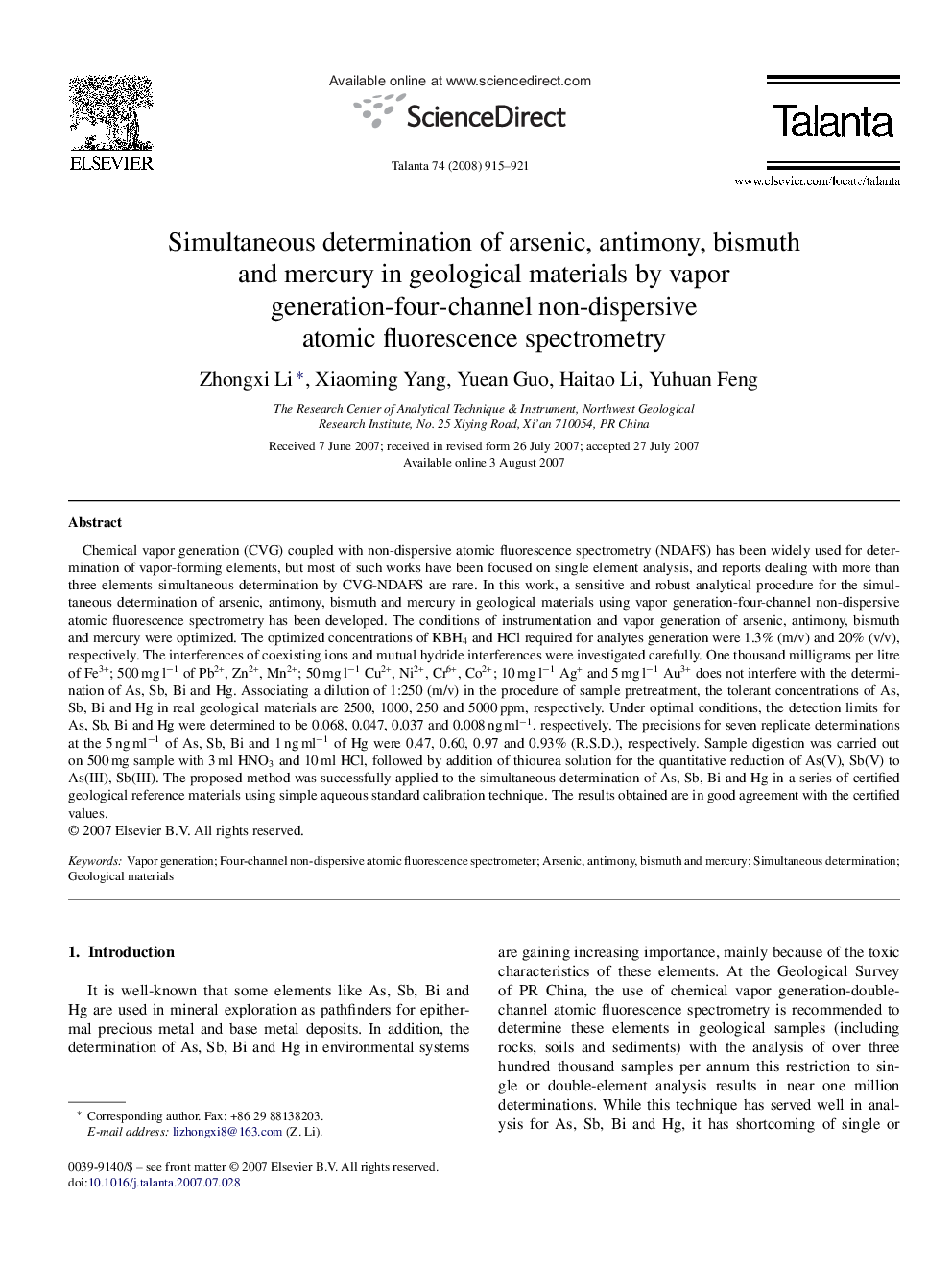| Article ID | Journal | Published Year | Pages | File Type |
|---|---|---|---|---|
| 1247136 | Talanta | 2008 | 7 Pages |
Chemical vapor generation (CVG) coupled with non-dispersive atomic fluorescence spectrometry (NDAFS) has been widely used for determination of vapor-forming elements, but most of such works have been focused on single element analysis, and reports dealing with more than three elements simultaneous determination by CVG-NDAFS are rare. In this work, a sensitive and robust analytical procedure for the simultaneous determination of arsenic, antimony, bismuth and mercury in geological materials using vapor generation-four-channel non-dispersive atomic fluorescence spectrometry has been developed. The conditions of instrumentation and vapor generation of arsenic, antimony, bismuth and mercury were optimized. The optimized concentrations of KBH4 and HCl required for analytes generation were 1.3% (m/v) and 20% (v/v), respectively. The interferences of coexisting ions and mutual hydride interferences were investigated carefully. One thousand milligrams per litre of Fe3+; 500 mg l−1 of Pb2+, Zn2+, Mn2+; 50 mg l−1 Cu2+, Ni2+, Cr6+, Co2+; 10 mg l−1 Ag+ and 5 mg l−1 Au3+ does not interfere with the determination of As, Sb, Bi and Hg. Associating a dilution of 1:250 (m/v) in the procedure of sample pretreatment, the tolerant concentrations of As, Sb, Bi and Hg in real geological materials are 2500, 1000, 250 and 5000 ppm, respectively. Under optimal conditions, the detection limits for As, Sb, Bi and Hg were determined to be 0.068, 0.047, 0.037 and 0.008 ng ml−1, respectively. The precisions for seven replicate determinations at the 5 ng ml−1 of As, Sb, Bi and 1 ng ml−1 of Hg were 0.47, 0.60, 0.97 and 0.93% (R.S.D.), respectively. Sample digestion was carried out on 500 mg sample with 3 ml HNO3 and 10 ml HCl, followed by addition of thiourea solution for the quantitative reduction of As(V), Sb(V) to As(III), Sb(III). The proposed method was successfully applied to the simultaneous determination of As, Sb, Bi and Hg in a series of certified geological reference materials using simple aqueous standard calibration technique. The results obtained are in good agreement with the certified values.
